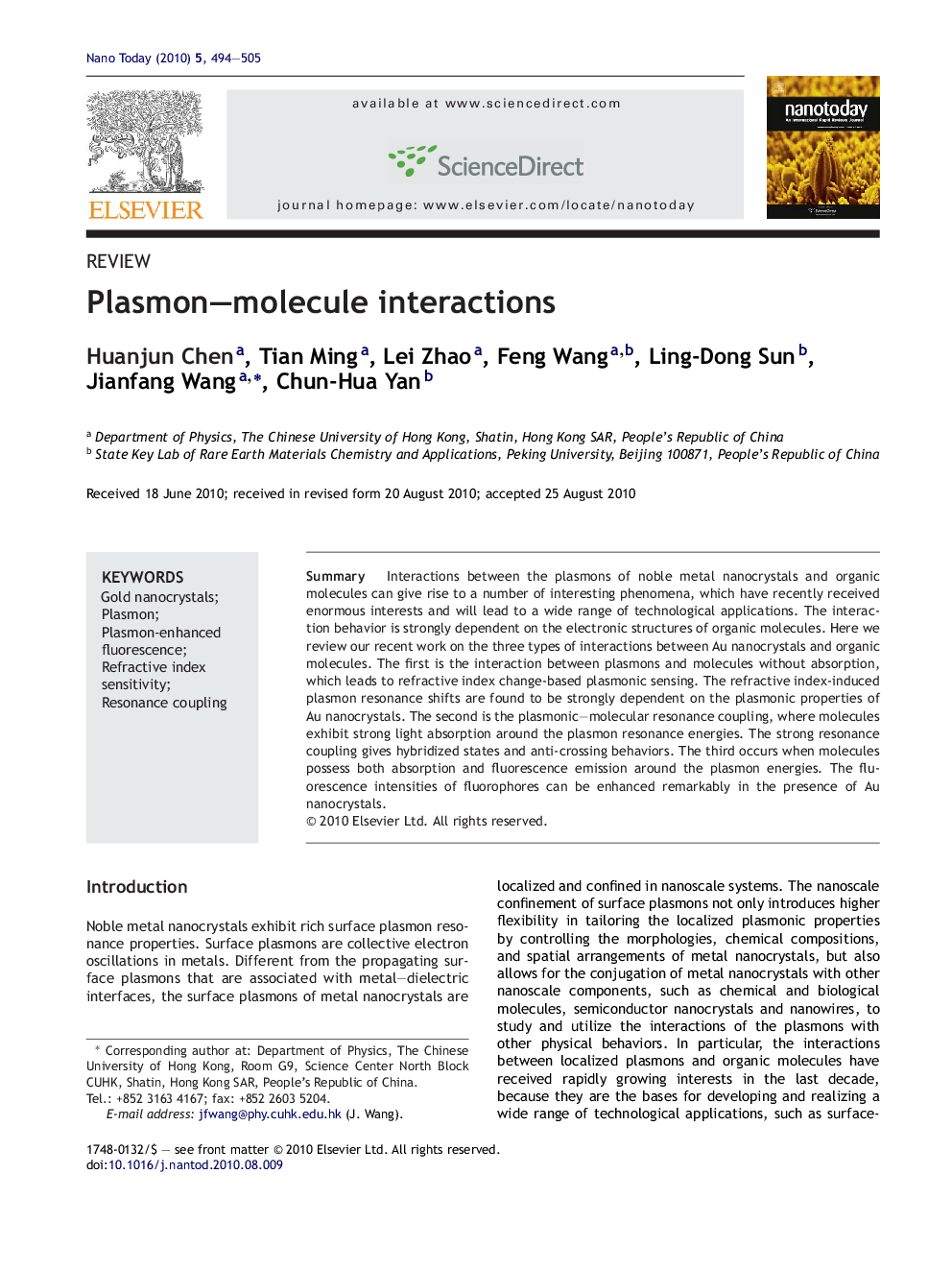| Article ID | Journal | Published Year | Pages | File Type |
|---|---|---|---|---|
| 32284 | Nano Today | 2010 | 12 Pages |
SummaryInteractions between the plasmons of noble metal nanocrystals and organic molecules can give rise to a number of interesting phenomena, which have recently received enormous interests and will lead to a wide range of technological applications. The interaction behavior is strongly dependent on the electronic structures of organic molecules. Here we review our recent work on the three types of interactions between Au nanocrystals and organic molecules. The first is the interaction between plasmons and molecules without absorption, which leads to refractive index change-based plasmonic sensing. The refractive index-induced plasmon resonance shifts are found to be strongly dependent on the plasmonic properties of Au nanocrystals. The second is the plasmonic–molecular resonance coupling, where molecules exhibit strong light absorption around the plasmon resonance energies. The strong resonance coupling gives hybridized states and anti-crossing behaviors. The third occurs when molecules possess both absorption and fluorescence emission around the plasmon energies. The fluorescence intensities of fluorophores can be enhanced remarkably in the presence of Au nanocrystals.
Graphical abstractFigure optionsDownload full-size imageDownload high-quality image (90 K)Download as PowerPoint slideResearch highlights▶ Increases in the refractive index of the surrounding medium lead to remarkable red shifts of the localized surface plasmon resonances of gold nanocrystals. ▶ Plasmonic and molecular resonance coupling between gold nanocrystals and adsorbed dye molecules induces peak splitting and enormous peak shifts. ▶ Plasmon-enhanced fluorescence on gold nanorods is strongly dependent on the excitation polarization.
